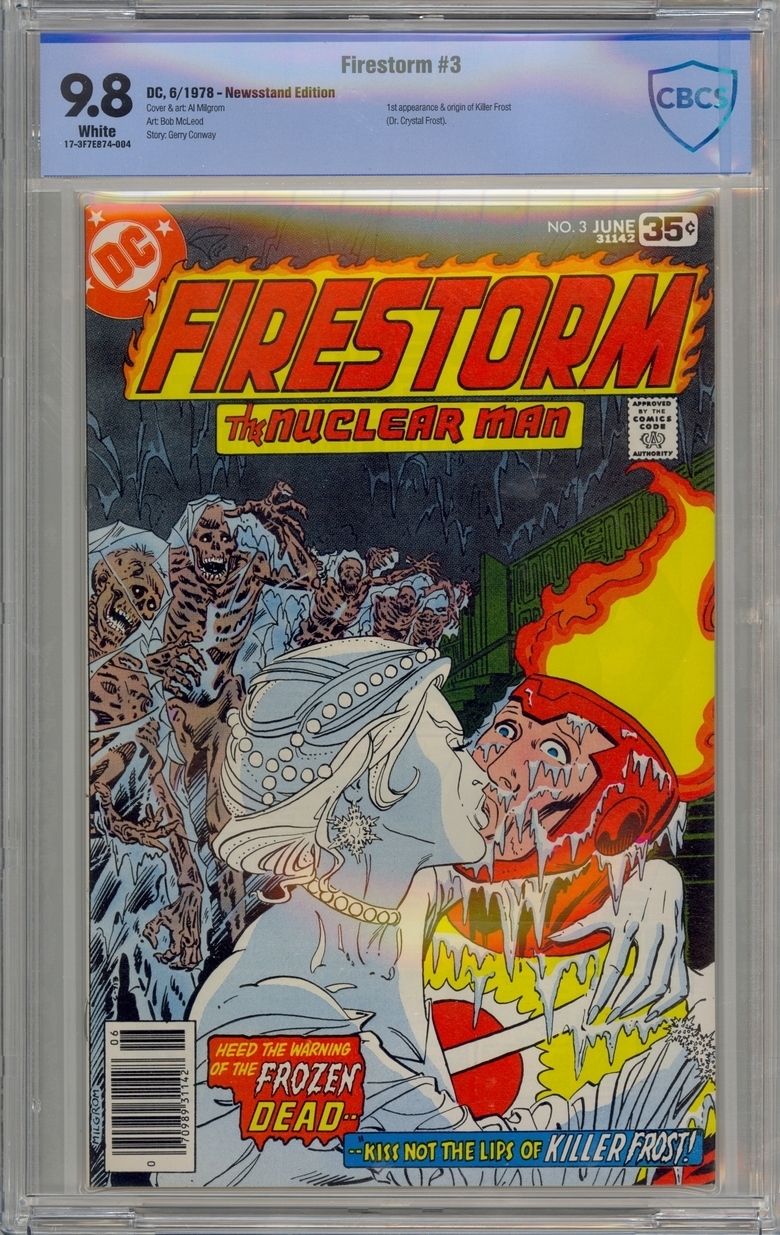Newsstand Edition v. Direct designations6371
 Collector Collector
|
DocBrown private msg quote post Address this user | |
Quote:Originally Posted by esaravo I saw this in another thread, and I think this may lead to some confusion. Simply stated, there is no Direct version of this book. DC didn't go to Direct versions of any books ASIDE from Whitmans, which are marked differently, until October of 1980. Someone could see this and, since it implies that there's a Direct version, look for something that doesn't exist. Thoughts? |
||
| Post 1 • IP flag post | ||
 Collector Collector
|
TommyJasmin private msg quote post Address this user | |
| Hold on to something folks, I am agreeing with Doc on this one. From the perspective of someone who works on this stuff "under the hood", an item's "ID" should consist of the least information required to uniquely identify it. In this case Newsstand is superfluous. We don't tag 1940's books as "Newsstand", for example, because that's all there was. |
||
| Post 2 • IP flag post | ||
 Collector Collector
|
CopperAgeKids private msg quote post Address this user | |
| Yeah, I'm aware of this fact. CBCS should correct this. As it stands, this has Mile High Comics newsstand mania, written all over it. |
||
| Post 3 • IP flag post | ||
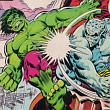 Collector Collector
|
X51 private msg quote post Address this user | |
| It doesn't bother me since it's not an error. The implication of a direct market version existing is an assumption. I believe people should be aware of what they are purchasing. There is a 12 pence version. | ||
| Post 4 • IP flag post | ||
 Collector Collector
|
X51 private msg quote post Address this user | |
Quote:Originally Posted by CopperAgeKids Mile High does have a lot of listing for versions that don't exist. |
||
| Post 5 • IP flag post | ||
 COLLECTOR COLLECTOR
|
shrewbeer private msg quote post Address this user | |
Quote:Originally Posted by X51 The defining characteristic of a newsstand book to a newsstand collector is that the book has a direct edition counterpart. While some DC books had direct edition counterparts pre-80 (whitmans), not all of them did. In this case, this particular book does not. It is an error, there is no other printing of it. If there is a census coming, DB is correct; this will lead folks to believe a Direct exists, and it should be corrected. Here is some additional perspective: I don’t care about collecting Whitman’s, technically they are just the first direct editions. A Whitman collector would gasp at that and quickly correct me that they are different. To a non-newsstand collector, yes most books pre direct edition are technically newsstands (as seen in this weeks cover contest, @CaptainCanuck submitted his as a loophole book). But then I am quick to jump in that to a collector, a book is not newsstand unless it has a direct edition (or whitman) counterpart. I hope that makes sense. About as much sense as H181 being Wolverines first appearance. We collectors are a funny bunch   |
||
| Post 6 • IP flag post | ||
 COLLECTOR COLLECTOR
|
dielinfinite private msg quote post Address this user | |
Quote:Originally Posted by TommyJasmin I really wish that was the policy at CBCS but unfortunately that is not the case 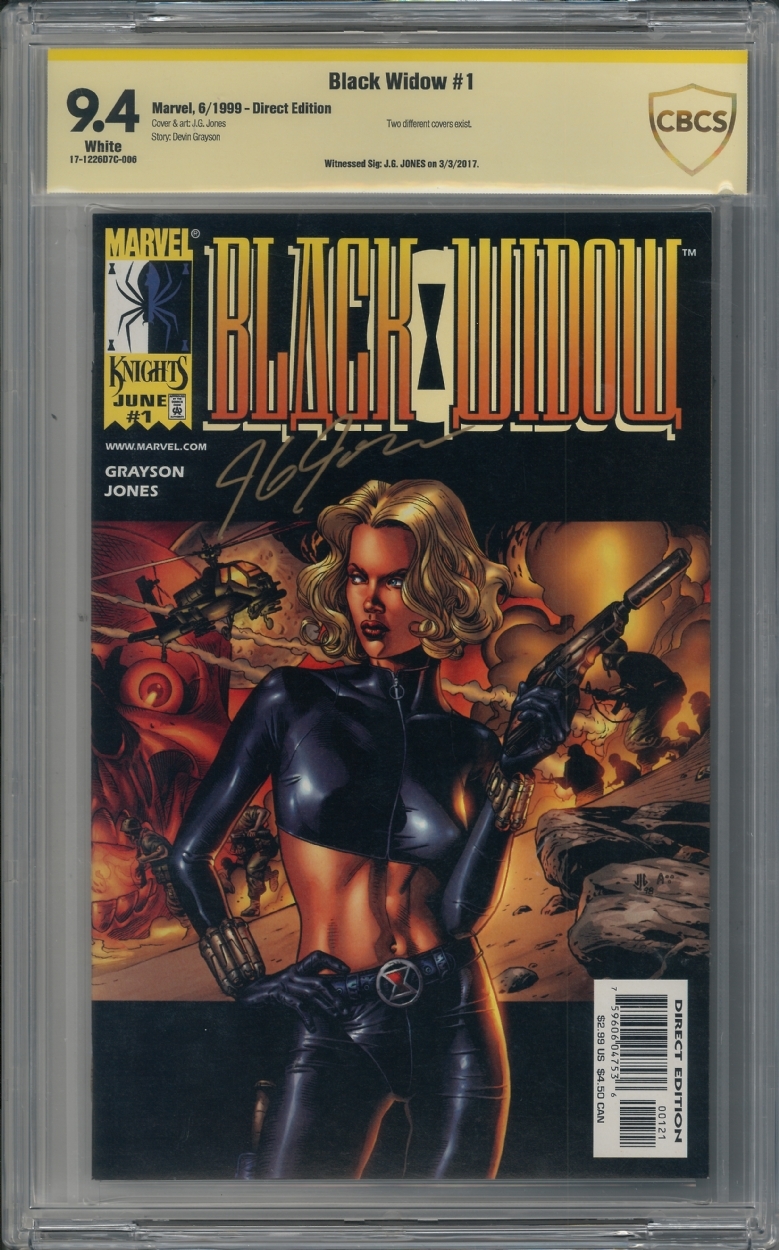  |
||
| Post 7 • IP flag post | ||
 I bought a meat grinder on amazon for $60 and it's changed my life. I bought a meat grinder on amazon for $60 and it's changed my life.
|
kaptainmyke private msg quote post Address this user | |
| What's the concern over the Black Widow #1? Two direct editions, two different covers. OP is correct. Only certain issues from 1987 to 2017 should be notated as being Newsstand. I agree that if there is no direct edition counterpart a book should not be categorized as being a Newsstand Edition. The barcodes for years for comics in 1972-1987 doesn’t really matter. It was a 50/50 ratio split in distribution of direct editions over newsstand editions. Search for comic books from the years 1990-2001 with UPC bar codes on cover. Search for comics from the years 2002-2017 with bar codes that do not say “DIRECT EDITION”. I grinned at the Mile High Newsstand comment, that is so true. |
||
| Post 8 • IP flag post | ||
 Captain Corrector Captain Corrector
|
CaptainCanuck private msg quote post Address this user | |
| @shrewbeer Quote: Originally Posted by shrewbeer It looks like you've only recently formulated this opinion. As I have pointed out in your previous thread titled "Cover Contest Week 90 - Newsstand is Dead!", you have contradicted yourself. |
||
| Post 9 • IP flag post | ||
 Collector Collector
|
DocBrown private msg quote post Address this user | |
Quote:Originally Posted by kaptainmyke The first specifically produced Direct market versions have Feb, 1977 cover dates (Marvel) or Oct, 1980 cover dates (DC)...Archie is in there, somewhere, but I don't have that at my fingertips. After that point, there should be both a "Newsstand" and "Direct" edition notation, and if they wanted to be REALLY accurate, they'd take the list of Direct Marvels and specifically input those issues into the system. For example, there is no known Direct edition of X-Men before the company wide June, 1979, EXCEPT #118. So, #118 should have "Newsstand edition" and "Direct edition", but #117 or #119 should not. Likewise, a Batman #327 (Sep 1980) should not have a distinction, but #328 and going forward would. There are no barcodes before 1976 (June, 1976 for Marvel, and May 1976 for DC, not known for others, but around the same), but I understand your point about the collectability of Newsstands before about a certain year (though I would put that year about 1991.) |
||
| Post 10 • IP flag post | ||
 Collector Collector
|
DocBrown private msg quote post Address this user | |
Quote:Originally Posted by shrewbeer That is an inaccurate and misleading description. The defining characteristic of a newsstand book is that it was sold on the newsstand. It would be correct to say "the defining characteristic of a newsstand book during the Direct market era is that it has cover markings that distinguish it from its Direct counterpart, if that counterpart exists." |
||
| Post 11 • IP flag post | ||
 Collector Collector
|
DocBrown private msg quote post Address this user | |
| Also..."Whitmans" (DC & Gold Key) ARE Direct editions, and fat & skinny diamond Marvels from 1977-1979 should NOT be called "Whitmans." | ||
| Post 12 • IP flag post | ||
 COLLECTOR COLLECTOR
|
shrewbeer private msg quote post Address this user | |
Quote:Originally Posted by DocBrown No, it is not. Any newsstand collector does not collect a "newsstand" book unless it was produced along with another printing (whether it be a Whitman or direct edition). There are two definitions of newsstand here, and you are choosing to ignore one of them. There are books that were sold on newsstands, and there are "Newsstand editions". The latter is the former, but the former is not the latter. Understand? |
||
| Post 13 • IP flag post | ||
 Collector Collector
|
DocBrown private msg quote post Address this user | |
Quote:Originally Posted by shrewbeer Yes, it is. The newsstand existed long before the Direct market, so your "definition" is inaccurate and misleading. There are not "two definitions" of the newsstand; the newsstand definition has been the same since 1933 - comics that are produced for and distributed through the newsstand distribution network, to be sold on newsstands. Just because a distinction was made for DIRECT editions starting in 1977 doesn't therefore change the definition of the newsstand. You are trying to shoehorn your own faulty and personal "definition" of what a "newsstand edition" is. I'm not "choosing" to "ignore" it; I'm explaining why it's wrong. It's not a valid definition of the newsstand, as CaptainCanuck tried to explain to you before. You can't define the newsstand market in terms of the Direct market, but the Direct market in terms of the newsstand. Batman #3 is a newsstand book. So is Amazing Spiderman #75. So is Firestorm #3, shown above. So is X-Men #120. So is Alpha Flight #88. So is Foolkiller #1, or 3, or 4 (maybe even 5.) None of those books has a Direct counterpart, and yet they are all of them newsstand editions. 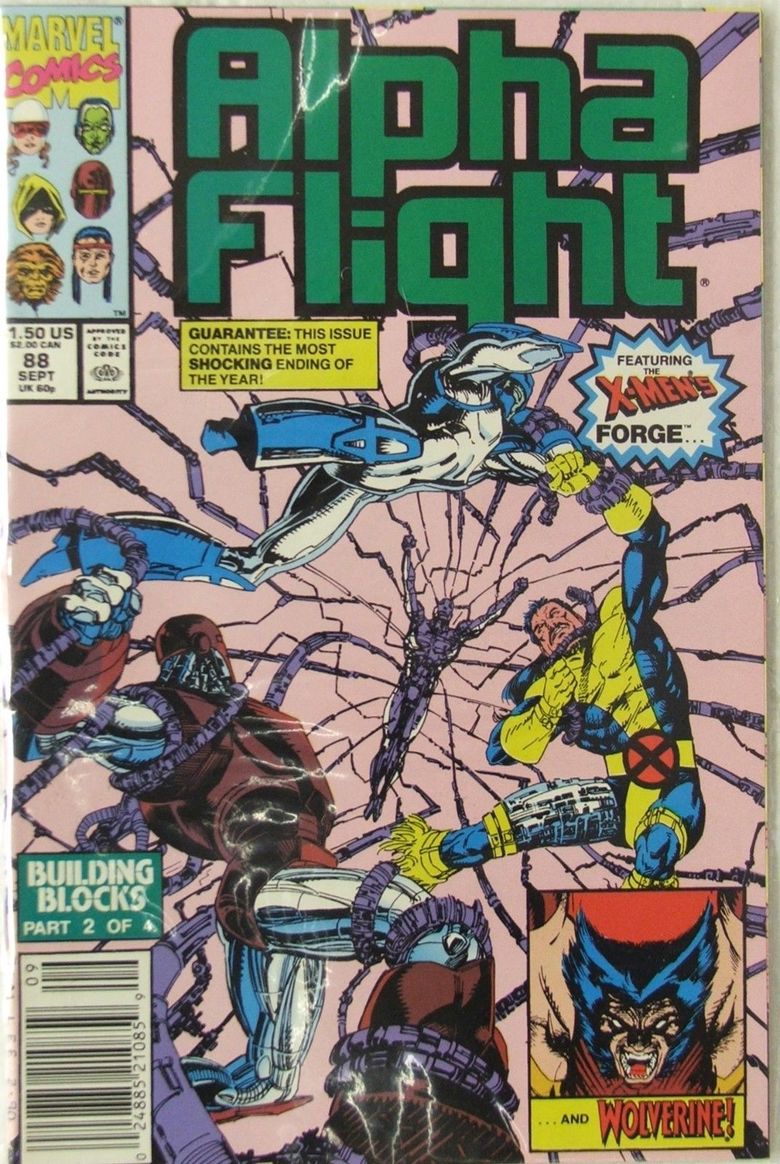 Are you suggesting that people who are newsstand edition collectors are going to avoid AF #88 because it DOES NOT have a "direct counterpart", and thus, doesn't fit your "definition"...? Are you suggesting that AF #88 there is NOT a "newsstand edition"...? The defining characteristic of a newsstand book IN THE DIRECT ERA is that it has cover markings which indicate the definition above. THAT definition properly describes the situation, and includes books that didn't have Direct market counterparts. If your "definition" conflicts with what actually exists, it's not a legitimate definition. Let's not start fights by using provocative language like "choosing to ignore." This is a scholarly discussion, not (yet another) brawl. |
||
| Post 14 • IP flag post | ||
 Collector Collector
|
DocBrown private msg quote post Address this user | |
Quote:Originally Posted by CaptainCanuck Agreed. |
||
| Post 15 • IP flag post | ||
 COLLECTOR COLLECTOR
|
shrewbeer private msg quote post Address this user | |
| @DocBrown lumping in all books that were sold on newsstands into the definition is just going to confuse people. If someone says "I collect newsstand comic books", they do not mean Batman #4, nor any book produced before the Whitman and direct edition market. Does that mean they are wrong? No, it means they have a different definition of "newsstand comic books" than you do. The hobby has evolved, and so has the definition. |
||
| Post 16 • IP flag post | ||
 Collector Collector
|
DocBrown private msg quote post Address this user | |
| The "currently typing: shrewbeer" appeared about one minute after post #14 above, which contained a LOT of information. Did you read what I wrote, SB, or are you just interested in disagreeing? How can anyone absorb and formulate a scholarly reply to a post like that in such a short time? |
||
| Post 17 • IP flag post | ||
 COLLECTOR COLLECTOR
|
shrewbeer private msg quote post Address this user | |
Quote:Originally Posted by DocBrown The first 16 years of my life were without television and unlimited access to books. I read and comprehend what I read fast. |
||
| Post 18 • IP flag post | ||
 Collector Collector
|
DocBrown private msg quote post Address this user | |
Quote:Originally Posted by shrewbeer I will write it again: if your definition does not reflect what actually is, it is not valid. Alpha Flight #88 DOES NOT have a "direct edition counterpart." Neither does Foolkiller #1. Neither do several other books in the Direct era. By your "definition", those books aren't newsstand editions, either, which means they are nothing, because in that era, there were only TWO versions: newsstand and Direct. Obviously, they aren't "nothing." Your "definition"..."The defining characteristic of a newsstand book to a newsstand collector is that the book has a direct edition counterpart."...is therefore invalid. (emphasis added.) The CORRECT definition, then, is "in the Direct era, the defining characteristic of a newsstand book is that the book has cover markings which identify it as a newsstand edition." |
||
| Post 19 • IP flag post | ||
 Collector Collector
|
DocBrown private msg quote post Address this user | |
| By the way...just because there isn't a "Direct" version of AF #88 and others does NOT mean those books simply didn't appear at comic shops. They did. It's just that that was all that Marvel (or the printer) printed for those particular books. So I recognize that MY definition is, technically, a little flawed when it comes to those books. Unfortunately, there's absolutely no way to tell which copies got to comic shops, and which got to the newsstands, so the only way to identify them is to call them all "newsstand versions", because that's how they were printed: as newsstand editions. |
||
| Post 20 • IP flag post | ||
 COLLECTOR COLLECTOR
|
shrewbeer private msg quote post Address this user | |
Quote:Originally Posted by DocBrown Ok, progress. I'm understanding your point, and its encouraging that you are seeing mine. We can probably expand on that definition as well. Of course, it would be more proper to say "I collect direct era newsstand edition books"; but its a mouthful and nobody is going to say that. |
||
| Post 21 • IP flag post | ||
 COLLECTOR COLLECTOR
|
conditionfreak private msg quote post Address this user | |
| I don't collect newsstand editions, other than to just have the issue and I don't care which it is. But seems to me, that a newsstand edition would be an edition sold at/on a newsstand while at the same time, a slightly different same issue was being sold in a specialty shop. The slightly different being the corner head shot or UPC NOT marked Direct Edition. Every comic prior to the formation of direct editions, would be a newsstand edition I assume. But those that specialize in collecting newsstand editions would not collect those as newsstands. Only as stand alone issues. Put simply. If you can not own a Newsstand Edition AND a Direct Edition at the same time. Neither one counts as anything other than "just a comic". |
||
| Post 22 • IP flag post | ||
 Collector Collector
|
DocBrown private msg quote post Address this user | |
Quote:Originally Posted by shrewbeer I saw your point from the beginning. With the respect that is due you, I was buying and cataloging these differences as an adult when you were in grade school. Your "definition" was imprecise and inaccurate. If you want to abandon it, and go with a more accurate definition, that's a good thing. |
||
| Post 23 • IP flag post | ||
 COLLECTOR COLLECTOR
|
shrewbeer private msg quote post Address this user | |
Quote:Originally Posted by DocBrown lol I'm not writing Webster's here, the "definition" was simply getting a point across. Coming up with an accurate definition, however, is a fun exercise so far. I don't think anyone has done it in any official capacity, not that I know of anyways. Quote: Originally Posted by conditionfreak Yep, you got it. Hence the need for a definition of a newsstand vs newsstand. |
||
| Post 24 • IP flag post | ||
 Collector Collector
|
DocBrown private msg quote post Address this user | |
Quote:Originally Posted by shrewbeer Sure they have. Check out the Overstreet Price Guide, 1982 edition, page A-8, among others. Interestingly, that explanation mentions only the price box difference, not the UPC box difference, but the main point is that the distinction is made by the differences in cover markings. |
||
| Post 25 • IP flag post | ||
 COLLECTOR COLLECTOR
|
shrewbeer private msg quote post Address this user | |
Quote:Originally Posted by DocBrown Quote: Originally Posted by DocBrown Quote: Originally Posted by DocBrown Quote: Originally Posted by DocBrown Reading through the above.... So are we agreeing that there is a need for an accurate definition of "newsstand edition", which is different from a newsstand book, or not? ..And respect where it is due, if anyone could come up with a good and worthy definition, it's probably you. |
||
| Post 26 • IP flag post | ||
 Collector Collector
|
Redshade private msg quote post Address this user | |
| Hello all. Perhaps you could help me out identifying a couple of items that I have for sale on ebay UK? I have this X-Men 103 CBCS 8.5 NEWSSTAND EDITION Cents 183227568562. I know that this is a newsstand edition because CBCS has mentioned this on the label. 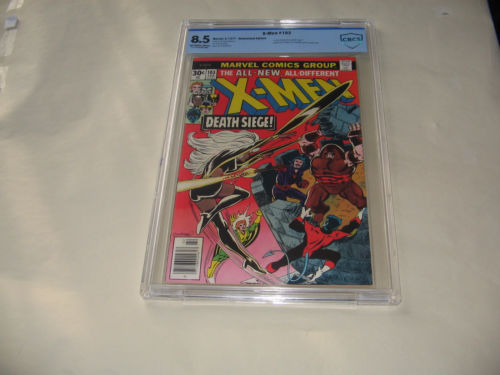 I also have this X-Men 122 CBCS 8.5 Cents 183227572372. I know this NOT to be a newsstand edition because of the strikethrough on the barcode ( and CBCS has not identified it as a newsstand edition or as a direct edition).  My real question concerns this X-Men 121 CBCS 8.0. NEWSSTAND EDITION Cents 183227570085. I have marked this as a newstand copy because there is no strikethrough on the barcode but it is not marked by CBCS as a newsstand edition ( nor is it marked as a direct edition). 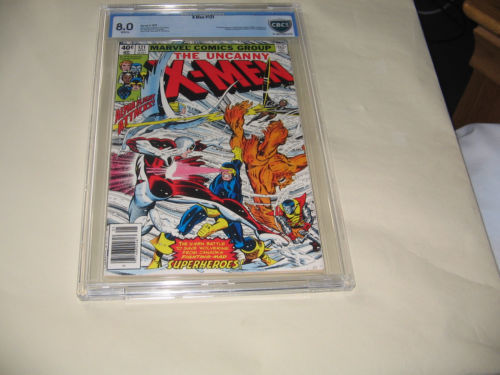 Am I in error marking this as a newsstand edition? I would not wish to mislead anyone. Any and all comments will be gratefully received. |
||
| Post 27 • IP flag post | ||
 Collector Collector
|
DocBrown private msg quote post Address this user | |
| Not sure where the confusion lies. The characteristic which makes a comic book a "newsstand edition" IS that it was sold on the newsstand (or, more properly sold THROUGH the newsstand distribution...i.e., "returnable"...network.) In the Direct era, a distinction was made in cover markings to acknowledge that fact, when Direct versions started being produced. What may blow the mind of some, is that even some comics specialty shops had newsstand distribution accounts, and received newsstand edition comics, in the 70s and 80s. That's why using the cover markings is the only way to realistically and accurately distinguish between the two versions, even if only one or the other exists. |
||
| Post 28 • IP flag post | ||
 COLLECTOR COLLECTOR
|
shrewbeer private msg quote post Address this user | |
| @Redshade that first book is the subject of this argument/discussion. Technically it is a newsstand book as it was sold on a newsstand, but no newsstand collectors would consider it a "newsstand edition" as there was no direct market at that time (what you have is the only "variation" of that book, there are no others). Second book you are correct, direct edition. Third book, damn you are right on the cusp there. I cant recall exactly what issue XMen started with direct/NS. I think it is #122, DB may be able to confirm |
||
| Post 29 • IP flag post | ||
 Collector Collector
|
Redshade private msg quote post Address this user | |
Quote:Originally Posted by shrewbeer Thanks for the reply. There really does seem to be confusion here. I wonder why CBCS has marked one barcode issue as newsstand and not the other? Are we to assume that the grading companies to be the final arbiters or is there still research to be done? I would not like to sell a copy as being a newsstand and have it returned as not being so on the whim of purchaser. |
||
| Post 30 • IP flag post | ||
This topic is archived. Start new topic?

